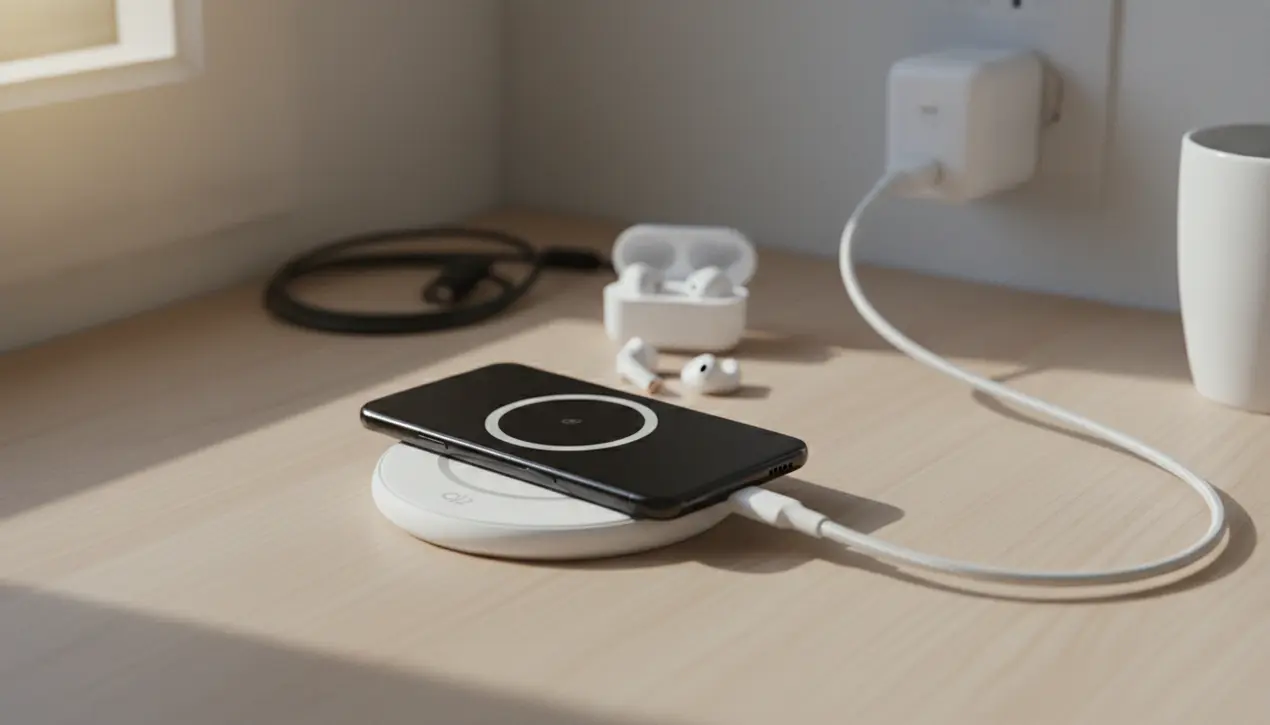
Otherauto & mobilityElectric Vehicles
How to wirelessly charge your phone with max power
ET
Ethan Brown
5 hours ago7 min read
Wireless charging has evolved from a niche luxury to a standard smartphone feature, yet many users remain frustrated by its inconsistent performance. You drop your phone on a pad expecting rapid replenishment, only to find it barely inching forward while growing uncomfortably warm—a far cry from the sleek convenience promised.Achieving maximum wireless charging speed isn't just about hardware compatibility; it's a financial and technical puzzle where every component matters. Think of it like building a side hustle: you need the right tools, a smart setup, and an understanding of the underlying economics to maximize returns.The core technology, electromagnetic induction, works through coils in both the charger and your phone transferring energy across small gaps. This process, while elegant, is notoriously inefficient compared to wired connections, with even minor misalignments causing significant power loss and heat buildup—the arch-nemesis of battery health.For years, the Qi standard provided a universal but imperfect foundation, but the 2024-2025 rollout of Qi2 represents a genuine leap forward. By integrating magnetic alignment, similar to Apple's MagSafe ecosystem, Qi2 chargers snap phones into perfect position, boosting efficiency and enabling higher power delivery of 15 to 25 watts.However, your phone's inherent limitations act as a hard cap. An iPhone 17 or Samsung Galaxy S25 might support 15W wirelessly, but using a 10W pad or an underpowered wall adapter effectively throttles your investment.This is where personal finance principles apply: you must match your gear to your goals. A Qi2-certified charger is your foundation, but it's useless without a high-output USB-C power adapter rated for at least 20W—that old 5W brick from 2016 is costing you time and performance.Even the cable matters; a short, high-quality USB-C cable minimizes resistance, much like choosing low-fee investment platforms maximizes your compound growth. Your phone's software also plays a crucial role.Many Android devices have a 'Fast Wireless Charging' toggle buried in settings that must be manually enabled, and all modern devices will intelligently slow charging to manage temperature, protecting your battery's long-term value—its lifespan. Environmental factors are equally critical.Thick cases, especially those with metal plates or magnetic wallets, disrupt the electromagnetic field, while charging on soft fabrics traps heat. The optimal setup is a bare phone or a slim, compatible case on a hard, well-ventilated surface, ensuring the system isn't fighting itself.If speeds still lag, troubleshoot like you would a budget: check each component. Is the wall adapter powerful enough? Is the cable certified for high wattage? Are both phone and charger firmware updated? Manufacturers constantly refine charging algorithms through updates, much like fintech apps improve their interfaces.The future is promising. Qi2 has dramatically narrowed the gap with wired charging, transforming wireless power from a slow novelty into a genuinely fast, reliable daily solution. With a strategic approach—the right certified hardware, proper power delivery, and mindful setup—you can consistently achieve near-peak speeds, turning a simple convenience into a smart, efficient part of your daily tech routine.
#wireless charging
#Qi2
#smartphones
#maximum power
#heat management
#featured
Stay Informed. Act Smarter.
Get weekly highlights, major headlines, and expert insights — then put your knowledge to work in our live prediction markets.
Comments
Loading comments...
© 2025 Outpoll Service LTD. All rights reserved.